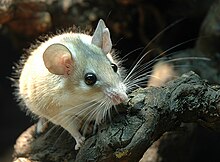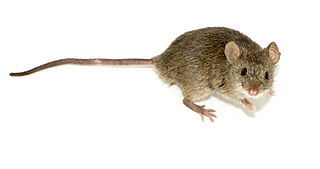
A mouse is a small rodent. Characteristically, mice are known to have a pointed snout, small rounded ears, a body-length scaly tail, and a high breeding rate. The best known mouse species is the common house mouse. Mice are also popular as pets. In some places, certain kinds of field mice are locally common. They are known to invade homes for food and shelter.

The Muroidea are a large superfamily of rodents, including mice, rats, voles, hamsters, lemmings, gerbils, and many other relatives. Although the Muroidea originated in Eurasia, they occupy a vast variety of habitats on every continent except Antarctica. Some authorities have placed all members of this group into a single family, Muridae, due to difficulties in determining how the subfamilies are related to one another. Many of the families within the Muroidea superfamily have more variations between the families than between the different clades. A possible explanation for the variations in rodents is because of the location of these rodents; these changes could have been due to radiation or the overall environment they migrated to or originated in. The following taxonomy is based on recent well-supported molecular phylogenies.

The Muridae, or murids, are the largest family of rodents and of mammals, containing approximately 1,383 species, including many species of mice, rats, and gerbils found naturally throughout Eurasia, Africa, and Australia.

The Cricetidae are a family of rodents in the large and complex superfamily Muroidea. It includes true hamsters, voles, lemmings, muskrats, and New World rats and mice. At almost 608 species, it is the second-largest family of mammals, and has members throughout the Americas, Europe and Asia.

The Nesomyidae are a family of African rodents in the large and complex superfamily Muroidea. It includes several subfamilies, all of which are native to either continental Africa or to Madagascar. Included in this family are Malagasy rodents, climbing mice, African rock mice, swamp mice, pouched rats, and the white-tailed rat.

The Eumuroida are a clade defined in 2004 by Steppan et al. that includes rats, mice and related species, though not all rodents; in other words, a specific group of muroid rodents. The clade is not defined in the standard taxonomic hierarchy, but it is between superfamily and family.
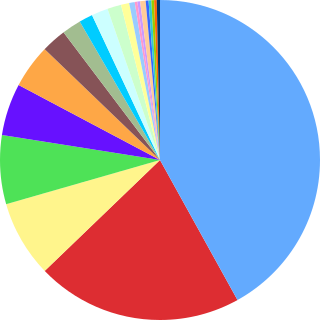
Mammalia is a class of animal within the phylum Chordata. Mammal classification has been through several iterations since Carl Linnaeus initially defined the class. No classification system is universally accepted; McKenna & Bell (1997) and Wilson & Reader (2005) provide useful recent compendiums. Many earlier ideas from Linnaeus et al. have been completely abandoned by modern taxonomists, among these are the idea that bats are related to birds or that humans represent a group outside of other living things. Competing ideas about the relationships of mammal orders do persist and are currently in development. Most significantly in recent years, cladistic thinking has led to an effort to ensure that all taxonomic designations represent monophyletic groups. The field has also seen a recent surge in interest and modification due to the results of molecular phylogenetics.
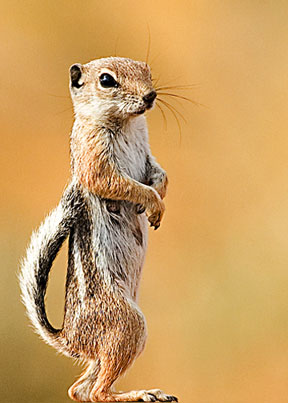
Sciuromorpha is a rodent clade that includes several different rodent families. It includes all members of the Sciuridae as well as the mountain beaver species.
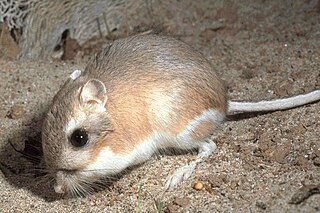
Castorimorpha is the suborder of rodents containing the beavers and the kangaroo rats. A 2017 study using retroposon markers indicated that they are most closely related to the Anomaluromorpha and Myomorpha.

Geomyoidea is a superfamily of rodent that contains the pocket gophers (Geomyidae), the kangaroo rats and mice (Heteromyidae), and their fossil relatives.
The zygomasseteric system in rodents is the anatomical arrangement of the masseter muscle of the jaw and the zygomatic arch of the skull. The anteroposterior or propalinal (front-to-back) motion of the rodent jaw is enabled by an extension of the zygomatic arch and the division of the masseter into a superficial, lateral and medial muscle. The four main types are described as protrogomorphous, sciuromorphous, hystricomorphous, and myomorphous.

Rodents are mammals of the order Rodentia, which are characterized by a single pair of continuously growing incisors in each of the upper and lower jaws. About 40% of all mammal species are rodents. They are native to all major land masses except for New Zealand, Antarctica, and several oceanic islands, though they have subsequently been introduced to most of these land masses by human activity.
Handbook of the Mammals of the World (HMW) is a book series from the publisher Lynx Edicions. The nine volumes were published from 2009 to 2019. Each mammal family is assessed in a full text introduction with photographs and each species has a text account with a distribution map and illustrations on a plate. This is the second major project by Lynx Edicions since the release of the Handbook of the Birds of the World in 1992. The chief editors are Russell Mittermeier and Don E. Wilson in association with Conservation International, the Texas A&M University and the IUCN. Don E. Wilson is also editor of the reference work Mammal Species of the World.

In rodent anatomy, the zygomatic plate is a bony plate derived from the flattened front part of the zygomatic arch (cheekbone). At the back, it connects to the front (maxillary) root of the zygomatic arch, and at the top it is connected to the rest of the skull via the antorbital bridge. It is part of the maxillary bone, or upper jaw, which also contains the upper cheekteeth. Primitively, rodents have a nearly horizontal zygomatic plate. In association with specializations in zygomasseteric system, several distinct morphologies have developed across the order.
